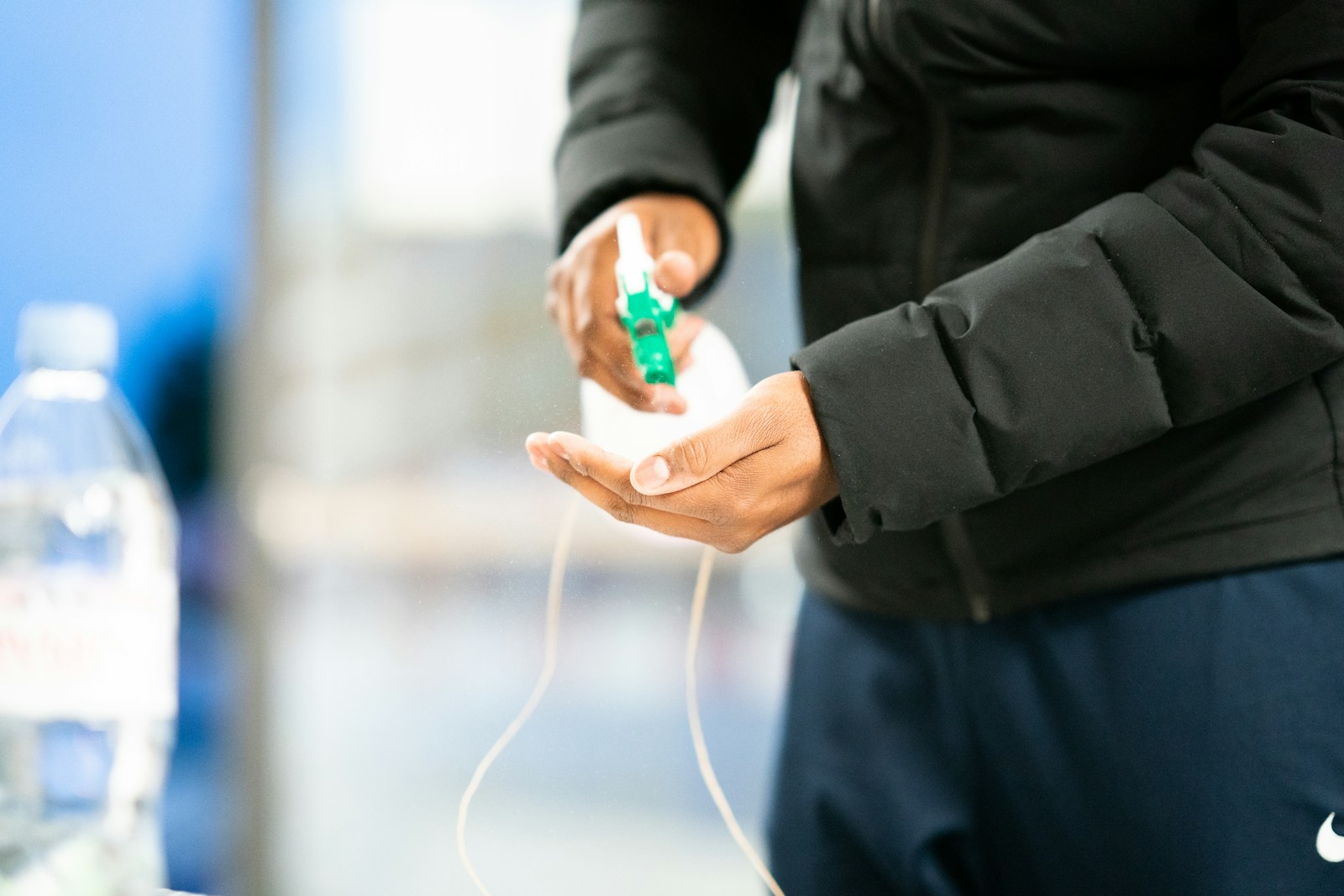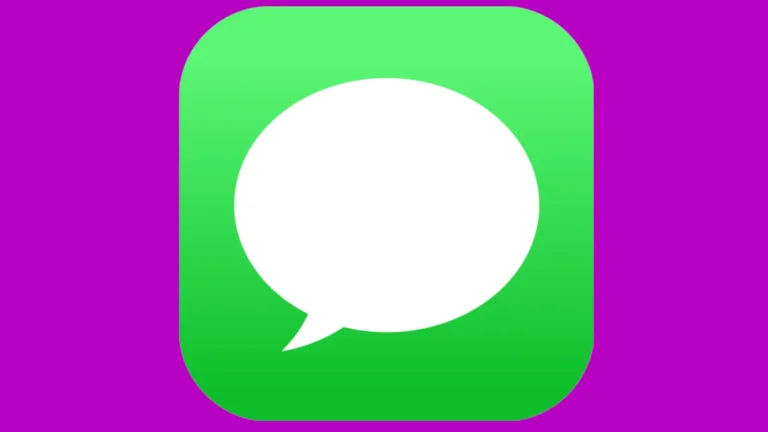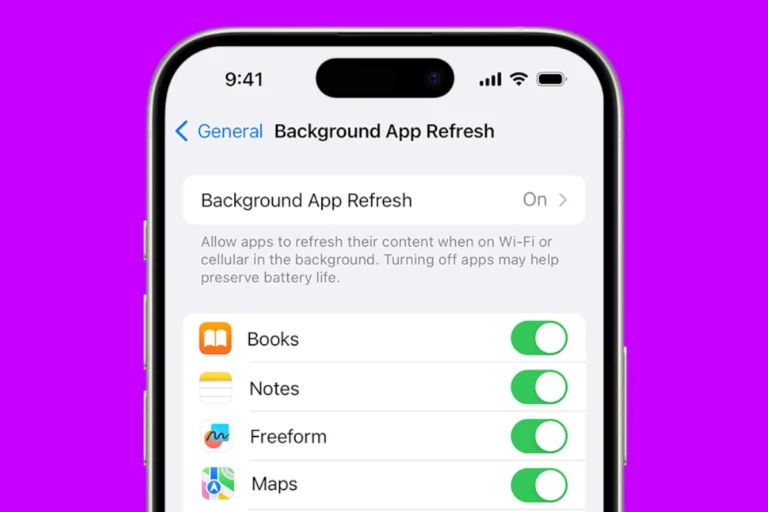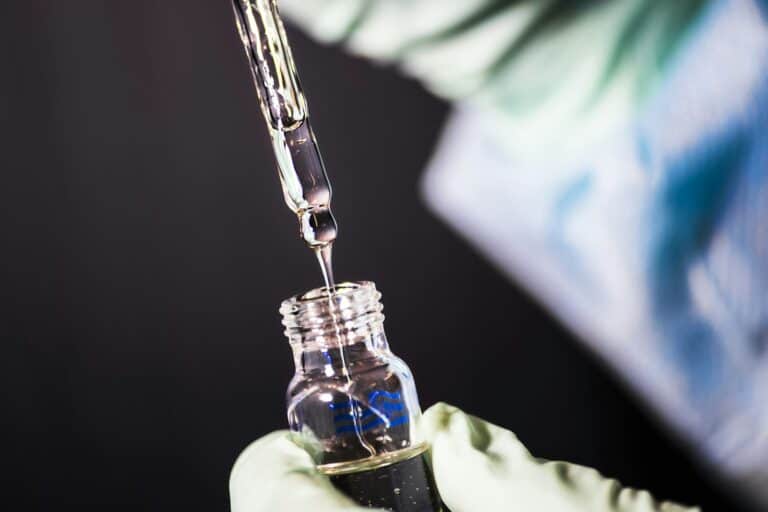
As flu season approaches, our gadgets need special attention. Phones, tablets, and laptops harbor countless germs from constant touching and sharing. These devices can become unexpected carriers of viruses and bacteria that contribute to illness spread.
Properly disinfecting your electronic devices can reduce your risk of catching the flu by eliminating up to 99% of surface bacteria. Using a microfiber cloth with a 50/50 water and alcohol solution offers effective cleaning without damaging sensitive components. Remember to apply the cleaning solution to the cloth rather than spraying directly on devices to prevent moisture damage.
Good hygiene practices extend beyond handwashing during flu season. Limiting device sharing and regularly sanitizing technology creates an additional layer of protection against illness. This simple routine takes just minutes but provides significant health benefits throughout the winter months.
Disinfect Your Tech to Keep Germs at Bay This Flu Season
As flu season ramps up, most people focus on washing their hands and avoiding crowded spaces — but one of the biggest germ hotspots might be right in your hands right now: your phone, keyboard, or tablet.
According to infection control experts, shared and personal electronic devices can harbor thousands of bacteria and viruses. Regularly cleaning and disinfecting your tech can help reduce your risk of illness while keeping your gadgets in great shape.
Here’s how to safely disinfect your devices this flu season — without damaging them.
🦠 Why Cleaning Your Devices Matters
Your phone, laptop, and other electronics collect germs from:
- Touching surfaces (like doorknobs, desks, and public transport)
- Setting devices down on shared spaces
- Using them while eating or coughing/sneezing nearby
Studies have found that smartphones can carry 10 times more bacteria than a toilet seat. During cold and flu season, these germs can easily transfer from your hands to your face, increasing your risk of infection.
🧴 What You’ll Need
Before you start cleaning, gather the right materials. Avoid harsh chemicals that can damage screens or finishes.
Safe cleaning supplies:
- 70% isopropyl alcohol wipes or solution
- Microfiber cloths (lint-free)
- Cotton swabs for small crevices
- Compressed air (optional, for keyboards and ports)
- Mild dish soap and water (for accessories like cases)
Avoid:
- Bleach or hydrogen peroxide
- Abrasive cleaners or paper towels
- Spraying liquids directly on your devices
(Sources: PCMag – Cleaning Electronics, The Lab – Prevent Germs on Shared Devices, IPAC Canada Guidelines, 2024)
📱 How to Disinfect Your Phone and Tablet
- Power off your device and unplug any cables.
- Remove the case and clean it separately with soap and water (if it’s plastic or silicone).
- Use a 70% isopropyl alcohol wipe or lightly dampened microfiber cloth to wipe down the screen, back, and sides.
- Avoid ports and openings — never let moisture enter speakers or charging ports.
- Let the device air dry completely before turning it back on.
👉 Tip: Apple and Samsung both confirm that 70% isopropyl alcohol wipes are safe for their devices.
💻 How to Clean Your Laptop and Keyboard
Keyboards and trackpads are some of the dirtiest surfaces you touch.
To clean:
- Shut down and unplug your laptop.
- Turn it upside down and gently tap to remove crumbs or debris.
- Use compressed air to blow out dust between keys.
- Wipe the keyboard, trackpad, and palm rest with a 70% alcohol wipe.
- For external keyboards, disconnect them first and follow the same steps.
(Avoid using bleach or soaking wipes — moisture can damage internal circuits.)
🖱️ Cleaning Mice, Headphones, and Accessories
Mouse:
- Wipe all surfaces with an alcohol wipe.
- Pay attention to buttons and the scroll wheel.
Headphones or earbuds:
- Remove ear tips and wash them with mild soap and water.
- Clean the mesh gently with a dry cotton swab or soft brush.
Smartwatches and fitness trackers:
- Power off and remove from bands.
- Wipe with an alcohol wipe or disinfectant formulated for electronics.
- Clean the band separately (silicone can be washed; leather should be wiped only).
🖥️ Disinfecting Monitors and Touchscreens
- Turn off the monitor and unplug it.
- Use a dry microfiber cloth to remove dust first.
- Lightly dampen the cloth with 70% isopropyl alcohol (never spray directly).
- Wipe gently in circular motions.
- Dry with a clean microfiber cloth.
🧽 How Often Should You Clean?
During flu season, experts recommend:
- Phones & tablets: Daily
- Keyboards & mice: 2–3 times per week
- Shared devices (office equipment, POS systems): After each user
Frequent cleaning is especially important if you share devices with coworkers, family members, or students.
🧠 Bonus Tips for a Germ-Free Workspace
- Keep hand sanitizer near your desk and use it before touching shared tech.
- Avoid eating over your keyboard or phone.
- Store devices in clean, dry areas.
- Use screen protectors — they’re easier to disinfect and replace.
✅ Final Thoughts
Keeping your devices clean is one of the simplest ways to protect yourself during cold and flu season. By using gentle disinfectants, proper cleaning techniques, and consistent habits, you can reduce the spread of germs — without damaging your tech.
For more detailed guidelines, check out:
- CDC – Infection Prevention and Control Strategies for Seasonal Influenza
- PCMag: How to Disinfect and Clean Electronics
- IPAC Canada – Electronic Devices Practice Recommendations (PDF)
Key Takeaways
- Regular disinfection of electronic devices can eliminate most harmful germs that contribute to flu transmission.
- A microfiber cloth dampened with alcohol-water solution provides safe and effective cleaning for most devices.
- Combining tech hygiene with handwashing and limited device sharing creates comprehensive protection during flu season.
Understanding the Risk of Germs During Flu Season
Flu season brings a significant increase in germ activity and transmission risk, particularly in shared spaces and on frequently touched surfaces. Your personal devices can become unexpected carriers of harmful pathogens.
Types and Proliferation of Germs
During flu season, several types of microorganisms pose health threats:
- Viruses: Influenza viruses can survive on hard surfaces for up to 24 hours, while COVID-19 viruses may remain viable for days on certain materials.
- Bacteria: Common bacteria like Staphylococcus and Streptococcus thrive on tech devices, with studies showing smartphones carry more bacteria than toilet seats.
- Fungi: These can develop on moist surfaces and in device crevices.
Tech devices serve as perfect germ hosts due to:
- Frequent handling throughout the day
- Warm surfaces that promote microbial growth
- Rarely being properly disinfected
Research indicates the average person touches their phone over 2,600 times daily. This creates countless opportunities for germs to spread between hands, devices, and faces.
Impact of Flu Season on Germ Transmission
Seasonal factors significantly increase germ transmission risks during flu season:
Environmental Conditions:
- Lower humidity in heated indoor spaces makes viruses more stable
- People spending more time indoors increases close-contact transmission
- Reduced ventilation in winter buildings creates germ-friendly environments
Transmission rates spike as people return to work and school after holidays. This timing aligns with peak flu season, creating a “perfect storm” for infections.
Touch points like phones and tablets become critical vectors when respiratory droplets from coughs and sneezes land on surfaces. The CDC notes that good health habits can significantly reduce transmission, including regular disinfection of frequently touched items.
The convergence of flu, cold viruses, and COVID-19 during winter months creates multiple infection pathways, making proper device hygiene even more crucial.
The Significance of Disinfecting Technology
Our electronic devices collect more than just data—they gather germs too. Keeping tech clean isn’t just about appearances; it’s a crucial step in preventing illness during flu season.
Electronics as Germ Hotspots
Our phones, tablets, and laptops travel everywhere with us—from bathrooms to kitchens, offices to public transportation. This mobility makes them perfect vehicles for collecting and transferring bacteria and viruses. Studies show smartphones can harbor more germs than a toilet seat due to their constant handling and warm surfaces.
Keyboards collect debris from our fingertips, while touchscreens record every tap with a fingerprint and potential pathogens. Office equipment like copiers also become communal germ collection points as multiple people press buttons throughout the day.
Regular cleaning with appropriate disinfectant wipes specifically designed for electronics can reduce bacterial counts by up to 99%. However, many people clean their devices less than once a month, if at all.
Remember that different devices require different cleaning approaches. Screens need gentle care with appropriate cleaners, while keyboards might need compressed air before wiping down.
The Role of Tech in Spreading Flu
Technology creates an efficient transmission chain for flu viruses. When an infected person uses a device and then another person handles the same surface, pathogens can transfer easily. The flu virus can survive on hard surfaces for up to 24 hours.
In workplaces and schools, shared devices like copiers, printers, and communal computers become transmission hubs. One employee with the flu touching a copier button can potentially expose dozens of colleagues.
Children’s technologies present particular challenges, as younger users may have less disciplined hygiene habits. School tablets and computers require more frequent disinfection during peak flu season.
Proper tech hygiene includes:
- Washing hands before and after device use
- Using disinfectant wipes designed for electronics
- Avoiding device use while eating
- Not sharing personal devices during illness
Best Practices for Disinfection
Proper disinfection of tech devices requires specific techniques to effectively kill germs without damaging sensitive electronics. Following established guidelines can help protect both your health and your valuable devices.
Effective Use of Disinfectant Wipes
When cleaning tech devices, it’s important to be selective about the products you use. Despite some advice against using them, certain disinfectant wipes can be effective if used properly.
For phones and tablets, first turn off the device as a safety precaution. Instead of applying wipes directly, consider using a microfiber cloth with a 50/50 water and alcohol solution. This method helps prevent moisture damage to electronic components.
When using the cloth, spray the cleaning solution onto it rather than directly onto the device. Gently wipe all surfaces, paying special attention to areas that are touched frequently.
For keyboards and mice, carefully run the cloth between keys and across surfaces. Allow devices to dry completely before turning them back on or using them again.
Recommendations by the Environmental Protection Agency
The Environmental Protection Agency maintains lists of approved disinfectants that effectively kill flu viruses and other pathogens. These products have been tested and verified for effectiveness when used according to label directions.
The EPA recommends a two-step process: first clean surfaces with a general household cleaner to remove dirt and germs, then apply an EPA-registered disinfectant. Always follow product label instructions for contact time—the amount of time the surface should remain visibly wet.
For electronics specifically, the EPA suggests using alcohol-based wipes or sprays containing at least 70% alcohol for disinfection. These solutions evaporate quickly, reducing the risk of liquid damage.
Products labeled as “disinfectants” must meet EPA standards for killing germs, while “sanitizers” may only reduce bacteria rather than eliminating viruses completely.
Maintaining a Strong Immune System
While cleaning your devices helps prevent germ spread, boosting your immune system creates an additional layer of protection against seasonal illnesses. A strong immune system works alongside your disinfection efforts to keep you healthy.
Importance of a Healthy Diet
A nutrient-rich diet forms the foundation of immune health. Foods high in antioxidants help the body fight off infections naturally. Colorful fruits and vegetables provide essential nutrients that support immune function.
Experts recommend including these immune-boosting foods daily:
- Citrus fruits (oranges, grapefruits)
- Leafy greens (spinach, kale)
- Berries (blueberries, strawberries)
- Yogurt with active cultures
Probiotics found in fermented foods can improve gut health, where much of the immune system resides. A healthy gut microbiome helps the body identify and fight harmful pathogens more effectively.
Limiting processed foods, excessive sugar, and alcohol consumption allows the immune system to function optimally without unnecessary inflammation.
Essential Vitamins and Minerals
Specific nutrients play critical roles in immune function. Vitamin C stands out as particularly important during cold and flu season.
Key immune-supporting nutrients include:
| Nutrient | Function | Food Sources |
|---|---|---|
| Vitamin C | Supports white blood cell production | Citrus, bell peppers, broccoli |
| Vitamin D | Reduces inflammation | Fatty fish, egg yolks, sunlight |
| Vitamin E | Acts as an antioxidant | Nuts, seeds, vegetable oils |
| Zinc | Helps immune cells develop and communicate | Meat, shellfish, legumes |
Zinc supplements may reduce the duration of cold symptoms when taken early. However, whole food sources typically provide better absorption of nutrients than supplements.
Adequate hydration also supports immune function by helping flush toxins and transport nutrients throughout the body.
Beneficial Effect of Sleep on Immune Function
Quality sleep directly impacts immune system effectiveness. During sleep, the body produces and releases cytokines, proteins that target infection and inflammation.
Most adults need 7-9 hours of uninterrupted sleep nightly. Sleep deprivation can significantly reduce immune cell activity and production of antibodies.
Creating a consistent sleep schedule helps regulate the body’s internal clock. This improves sleep quality and immune function.
Healthy sleep habits include:
- Maintaining a cool, dark sleeping environment
- Limiting screen time before bed
- Avoiding caffeine in the afternoon and evening
- Using relaxation techniques like deep breathing
Regular exercise also promotes better sleep quality while independently supporting immune function through improved circulation of immune cells.
Additional Preventive Measures Against the Flu
Beyond disinfecting your tech devices, there are several crucial steps you can take to protect yourself during flu season. These preventive measures work together to create a strong defense against illness-causing germs that circulate during this time of year.
Importance of Hand Washing
Hand washing remains one of the most effective ways to prevent the spread of germs and respiratory illnesses like the flu. Proper technique matters significantly when washing hands.
The CDC recommends washing with soap and water for at least 20 seconds—about the time it takes to sing “Happy Birthday” twice. Pay special attention to areas often missed:
- Between fingers
- Under nails
- Around wrists
- Thumbs
Hand washing should occur frequently throughout the day, especially before eating, after using the restroom, and after being in public spaces. When hands are visibly soiled, hand washing is strongly preferred over hand sanitizer.
Studies show that regular hand washing can reduce respiratory infections by up to 21%. This simple habit represents one of the most accessible and affordable preventive measures anyone can practice.
Vaccinations and Flu Shot Availability
Getting an annual flu shot is considered the single most effective way to prevent influenza infection. The CDC recommends that everyone 6 months and older should receive an annual flu vaccination.
Flu shots are typically available from:
- Primary care physicians
- Pharmacies (often without appointment)
- Workplace clinics
- Community health centers
- Local health departments
Many insurance plans cover flu shots at no cost. For those without insurance, many pharmacies and clinics offer affordable options, often between $20-40.
The best time to get vaccinated is before flu season begins, typically by the end of October. However, getting vaccinated later still provides protection. Each year’s vaccine is formulated to protect against the most likely strains predicted for the upcoming season.
Utilization of Hand Sanitizer
When soap and water aren’t readily available, hand sanitizer provides an effective alternative. For maximum effectiveness, use sanitizers containing at least 60% alcohol.
Proper application technique includes:
- Apply enough product to cover all hand surfaces
- Rub hands together until completely dry (approximately 20 seconds)
- Don’t wipe off excess—allow to air dry completely
Keep sanitizer bottles in strategic locations—cars, purses, backpacks, and desks. This ensures easy access when needed. Many public spaces now provide sanitizer stations at entrances and exits.
However, hand sanitizer has limitations. It doesn’t eliminate all types of germs and may not work well on visibly dirty hands. It works best as a complement to regular hand washing rather than a complete replacement.
Recognizing and Managing Flu Symptoms
When flu season hits, knowing how to identify symptoms early and manage them effectively can help you recover faster. Being able to recognize the difference between a cold and flu is crucial for proper care.
Identifying Early Signs of Flu
Flu symptoms typically appear suddenly, unlike colds which develop gradually. Watch for these warning signs:
- Fever (usually high, 100-104°F)
- Chills and sweats
- Sudden headache (often severe)
- Dry, persistent cough
- Sore throat
- Stuffy or runny nose
The flu virus attacks the respiratory system and spreads when infected people cough or sneeze. Your body creates antibodies to fight the infection, but this process takes time.
It’s important to rest at the first signs of flu. Many people mistake early flu symptoms for a cold, delaying proper treatment. Contact a healthcare provider if symptoms are severe or you have underlying health conditions.
Coping with Symptoms like Fatigue and Body Ache
Fatigue and body aches are hallmark symptoms of influenza that can be debilitating. These occur as your immune system diverts energy to fight the virus.
To manage these symptoms effectively:
- Get plenty of rest – Your body needs extra sleep to recover
- Stay hydrated – Drink clear fluids like water, broth, and sports drinks
- Take OTC medications – Acetaminophen or ibuprofen can help reduce fever and relieve pain
Create a comfortable recovery space with tissues, medications, and drinks within reach. Eating a balanced diet helps maintain your body’s resistance to infection.
Warm baths or heating pads can temporarily relieve muscle aches. Never ignore severe symptoms like difficulty breathing, persistent fever, or confusion—these require immediate medical attention.
Iron’s Role in Combating Germs
Iron plays a complex role in the battle against infectious agents. This essential mineral affects both our immune defenses and pathogens’ ability to survive in our bodies.
Understanding Iron’s Effect on the Immune System
Iron serves as a critical element in our immune response to infections. The human body naturally limits iron availability during infections through a process called “nutritional immunity,” which helps restrict pathogen growth. When we get sick, our bodies sequester iron, making it less available to harmful bacteria that need it to multiply.
Many bacteria and viruses require iron to replicate and spread. This explains why alterations in iron transport mechanisms can directly impact how well pathogens grow within us.
Some antimicrobial cleaning products contain iron compounds that can damage bacterial cell membranes. These specialized cleaners may be effective for disinfecting electronic devices without causing damage to the equipment.
Iron’s dual role—essential for both human immunity and pathogen survival—makes it a fascinating component of infection control strategies. Maintaining proper iron levels supports optimal immune function while limiting what’s available to harmful microorganisms.
Frequently Asked Questions
Proper tech cleaning techniques help prevent illness while protecting your devices from damage. These common questions address the most effective and safe methods for disinfecting various electronics.
What is the best way to sanitize smartphones and tablets?
The safest way to clean smartphones and tablets is with a microfiber cloth slightly dampened with 70% isopropyl alcohol or using dedicated electronic disinfecting wipes. Always power off the device first.
Never spray cleaners directly onto screens or ports. Instead, apply the cleaning solution to the cloth first, then gently wipe the device.
For smartphone cases, remove them and clean separately according to the manufacturer’s instructions. Allow everything to dry completely before reassembling.
Which disinfectants are safe for electronic devices?
Solutions with 70% isopropyl alcohol are generally safe for most electronics. Hydrogen peroxide solutions (3%) can also work well for certain devices.
Many manufacturers now specify EPA-registered disinfectants that are approved for their products. Check the device manual or manufacturer website for specific recommendations.
Avoid bleach, ammonia, and abrasive cleaners as these can damage screens and protective coatings. Household cleaners containing these ingredients should never be used on electronics.
What are the recommended procedures for disinfecting computers and keyboards?
For keyboards, turn the device upside down and gently tap to remove loose debris. Use compressed air to blow out dust from between keys.
Lightly dampen a microfiber cloth with isopropyl alcohol and wipe down keyboard surfaces. Cotton swabs dipped in alcohol can reach between keys.
For computer monitors, use screen-safe wipes or a microfiber cloth very lightly dampened with water. Never spray directly onto screens, and avoid excessive moisture around ports and openings.
How frequently should tech devices be disinfected during flu season?
During flu season, frequently used devices like smartphones should be cleaned daily, especially if taken into public spaces or shared workplaces.
Keyboards and computer mice should be disinfected at least once a week, or more often if multiple people use them. This frequency should increase if someone in the household is ill.
Consider cleaning devices immediately after returning home from public places like hospitals, schools, or transportation hubs where germs are prevalent.
Can disinfecting wipes be used on all types of tech equipment?
Not all disinfecting wipes are safe for electronics. Only use wipes specifically labeled as safe for electronic devices.
Standard household disinfecting wipes often contain chemicals that can damage screens and internal components. Look for electronics-specific cleaning products.
For delicate equipment like camera lenses or specialized machinery, follow manufacturer guidelines exactly. These items may require specialized cleaning solutions.
What precautions should be taken to avoid damaging tech while disinfecting?
Always power off and unplug devices before cleaning. Remove batteries from portable devices when possible.
Never apply liquids directly to devices—always use a cloth as an intermediary. Excessive moisture can cause serious damage to electronic components.
Allow devices to dry completely before powering them back on. This helps prevent electrical shorts or damage from residual moisture.
Avoid using paper towels or tissues which can leave lint or scratch screens. Microfiber cloths are ideal for most electronics cleaning tasks.






